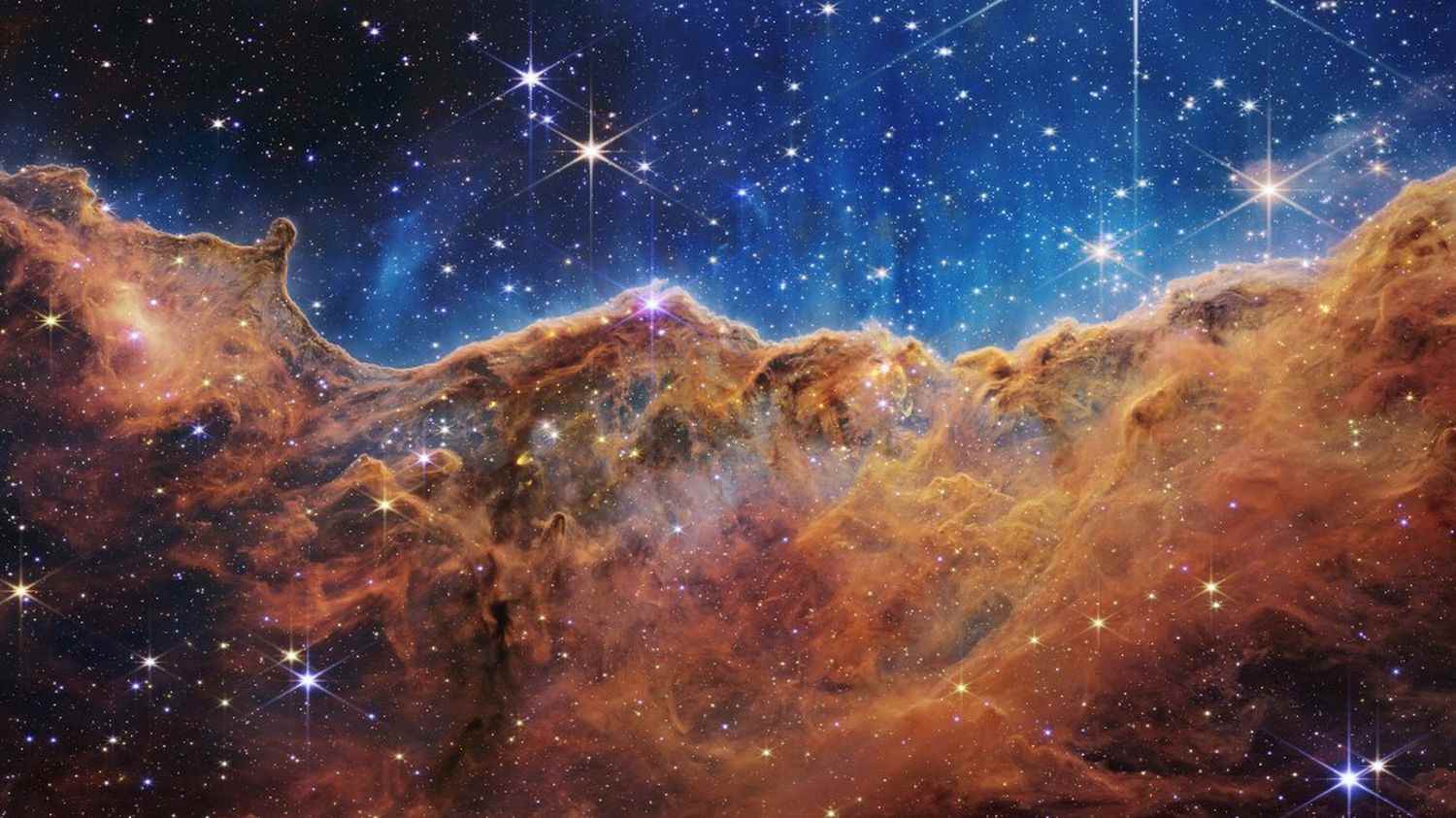Eyes full of stars. After a first photograph unveiled Monday evening by US President Joe Biden, NASA revealed on Tuesday July 12 all of the first five images of the James Webb telescope.
>> Why the James Webb Telescope will revolutionize space observation by succeeding Hubble
The Deepest Image of the Universe
The first image, that of Monday, reveals galaxies formed 13 billion years ago. It shows the galaxy cluster SMACS 0723. This is the image “the most precise and the most distant ever obtained. It represents a portion of the sky equivalent to the size of a grain of sand held at arm’s length”, explained the national center for space studies on Twitter.
Sneak a peek at the deepest & sharpest infrared image of the early universe ever taken—all in a day’s work for the Webb telescope. (Literally, capturing it took less than a day!) This is Webb’s first image released as we begin to #UnfoldTheUniverse: https://t.co/tlougFWg8B pic.twitter.com/Y7ebmQwT7j
—NASA Webb Telescope (@NASAWebb) July 11, 2022
The Carina Nebula: star nursery
An image released on Tuesday shows a spot in the Carina Nebula, a star nursery, located about 7,600 light-years away. “It’s beautiful to hurt your eyes”comments Eric Lagadec, astrophysicist at the Observatory of the Côte d’Azur, and president of the French Society of Astronomy and Astrophysics. “What we are seeing here is the foam of the waves of the dress of the galaxy, which is dancing”, summed up astrophysicist David Elbaz.
And here is a place where stars are born, in the Carina Nebula. It’s beautiful to have your eyes hurt!!!!! In orange gas and dust that will give stars. pic.twitter.com/A1HEjNF4iE
— Eric Lagadec (@EricLagadec) July 12, 2022
A dying star
The James Webb captured the Southern Ring Nebula. It is a dying star, a double star, which is expelling gas and dust. The image on the left was taken by the James Webb’s NIRCam instrument. The one on the right by another instrument, called MIRI, which is also on the James Webb. “We are seeing the birth of complex molecules in the practically dead body of a star and which is the first step towards complexity, towards life”, commented astrophysicist David Elbaz to Cnes.
Put a ring on it!
Compare views of the Southern Ring nebula and its pair of stars by Webb’s NIRCam (L) & MIRI (R) instruments. The dimmer, dying star is expelling gas and dust that Webb sees through in unprecedented detail: https://t.co/tlougFWg8B #UnfoldTheUniverse pic.twitter.com/yOMMmQcAfA
—NASA Webb Telescope (@NASAWebb) July 12, 2022
A grouping of galaxies: Stephan’s Quintet
Another image shows Stephan’s Quintet, a grouping of galaxies. Five are visible in total in this spectacular image, four of which interact, in a veritable gravitational dance. Two are merging.
✋ Galactic high five!
In Webb’s image of Stephan’s Quintet, we see 5 galaxies, 4 of which interact. (The left galaxy is in the foreground!) Webb will revolutionize our knowledge of star formation & gas interactions in these galaxies: https://t.co/tlougFWg8B #UnfoldTheUniverse pic.twitter.com/b2kH1tSyMs
—NASA Webb Telescope (@NASAWebb) July 12, 2022
Traces of water on an exoplanet
It’s not necessarily the most beautiful image, but it leaves you dreaming. Light analysis of exoplanet WASP-96b’s atmosphere shows traces of water. Please note that this does not mean that this planet is home to any form of life or is habitable. But scientists look for and carefully scrutinize exoplanets that show traces of water.
#Webb reveals steamy atmosphere ♨️ of exoplanet WASP-96 b, capturing the distinct signature of water along with evidence for clouds & haze — the most detailed measurements of this kind to date. Read more here: https://t.co/EoDvogJTH7 or below #WebbSeesFarther pic.twitter.com/ylpZjG17D8
— ESA Webb Telescope (@ESA_Webb) July 12, 2022
